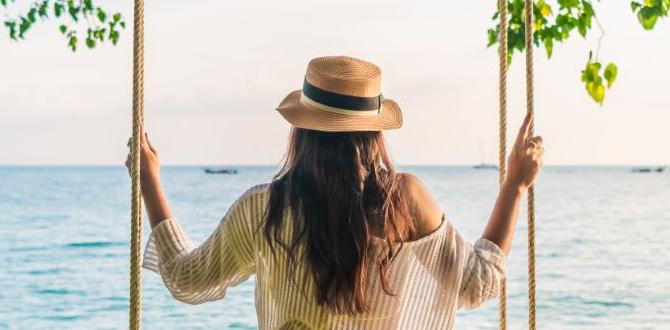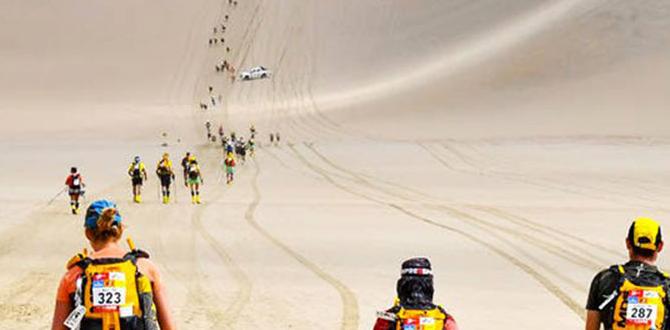Bhutan offbeat day trips offer incredible adventures beyond the usual tourist path, providing unique cultural immersion and stunning natural beauty with minimal planning. Explore lesser-known valleys, ancient monasteries, and vibrant local life for a truly authentic Bhutanese experience.
Bhutan, the Land of the Thunder Dragon, beckons with its pristine landscapes and deeply rooted culture. While iconic destinations like Paro Taktsang (Tiger’s Nest) are must-sees, there’s a whole world of offbeat charm waiting for those willing to venture a little further. Planning day trips from your base can unlock hidden gems and create unforgettable memories. This guide is your friendly companion to discovering Bhutan’s essential offbeat adventures, making your journey comfortable and stress-free, much like packing the right essentials for any trip, ensuring you’re always prepared, whether it’s for a challenging hike or a long flight where comfort is key.
Bhutan’s commitment to Gross National Happiness means that tourism is carefully managed, preserving its unique traditions and pristine environment. This approach also means that while some areas are well-trodden, many equally captivating places remain relatively untouched by mass tourism. These offbeat destinations offer a more intimate glimpse into Bhutanese life, away from the crowds. Getting there might require a bit more effort, but the rewards are immense: authentic experiences, breathtaking scenery, and a deeper connection with this magical kingdom.
We’ll guide you through selecting destinations that fit your interests, understanding the logistics, and making the most of your day trips, ensuring your adventure is as smooth as choosing reliable travel companions for your journey.
Why Choose Offbeat Day Trips in Bhutan?
Opting for offbeat day trips in Bhutan offers a richer, more authentic travel experience. It’s about stepping off the beaten path and uncovering the real heart of the Dragon Kingdom.
Uncovering Authentic Bhutanese Culture
The major tourist circuits are wonderful, but the true essence of Bhutanese life often thrives in its quieter villages and less-visited valleys. Offbeat day trips allow you to:
Interact with locals: Engage in genuine conversations and witness daily life unfold in a more natural setting.
Experience rural tranquility: Find peace in remote monasteries, far from the hustle and bustle of popular sites.
Discover unique traditions: Some remote communities preserve ancient customs and festivals that are rarely seen by mainstream tourists.
Escaping the Crowds
Bhutan’s popularity is growing, and while it’s far from overcrowded, popular sites can get busy. Offbeat locations offer:
Peace and solitude: Enjoy the serenity of nature and spiritual sites without distraction.
Better photo opportunities: Capture stunning landscapes and cultural moments without numerous other visitors in the frame.
A more personal connection: With fewer people around, you can often have a more intimate experience with the place and its people.
Embracing Adventure and Nature
Bhutan is a paradise for nature lovers. Offbeat day trips often lead to:
Stunning natural landscapes: Explore pristine forests, gurgling rivers, and dramatic mountain vistas often less documented.
Challenging hikes: Discover trails that offer rewarding views and a sense of accomplishment.
Biodiversity hotspots: Bhutan is rich in flora and fauna; remote areas can offer excellent chances for wildlife spotting.
Planning Your Offbeat Bhutan Adventure: Essential Tips
Embarking on an offbeat journey in Bhutan is rewarding, but a little preparation goes a long way. Think of it like preparing for any extended trip; having the right gear and information ensures comfort and reduces stress.
Working with Your Tour Operator
All visitors to Bhutan (except citizens of India, Bangladesh, and Maldives) must book through a licensed Bhutanese tour operator and pay a Sustainable Development Fee (SDF). Your tour operator is your key to unlocking offbeat experiences.
Communicate your interests: Be clear about wanting to explore less-visited areas. Share your desire for cultural immersion, nature, or specific activities.
Ask for recommendations: Your operator knows the country best. They can suggest suitable offbeat day trips based on your itinerary, fitness level, and interests.
Discuss flexibility: While itineraries are planned, discuss the possibility of spontaneous detours or spending more time in a place that captivates you.
Transportation and Logistics
Getting to and from offbeat locations is usually managed by your tour operator, but understanding the basics helps.
Vehicle choice: Depending on the road conditions, you might need a 4WD vehicle. Your operator will arrange this.
Road conditions: Bhutan’s roads can be winding and sometimes unpaved, especially to remote areas. Be prepared for slower travel times than you might expect.
Guides are essential: A licensed Bhutanese guide is mandatory and invaluable. They provide context, ensure your safety, and facilitate interactions with locals.
What to Pack for Offbeat Day Trips
Packing smart means less hassle and more enjoyment. For offbeat day trips, a few key items can make a big difference.
Essential Day Pack Items:
Comfortable walking/hiking shoes: Crucial for uneven terrain.
Layered clothing: Bhutan’s weather can change rapidly. Include moisture-wicking base layers, a fleece, and a waterproof outer shell.
Sun protection: Hat, sunglasses, and high-SPF sunscreen.
Insect repellent: Especially important if visiting rural or forested areas.
Reusable water bottle: Stay hydrated and reduce plastic waste.
Snacks: While meals are usually arranged, having some energy bars or fruit is wise.
Basic first-aid kit: For minor scrapes or blisters.
Camera and extra batteries/power bank: You’ll want to capture everything.
Cash (Ngultrum/Indian Rupees): For small purchases or offerings.
Personal care items: Including any specific needs like adult diapers or child diapers for peace of mind during longer excursions, especially if restroom facilities are infrequent. Having these discreetly available ensures comfort and allows you to focus on the experience.
Respecting Local Customs and Environment
Bhutanese culture is deeply intertwined with its Buddhist faith. Being a mindful traveler is paramount.
Dress modestly: Cover shoulders and knees when visiting religious sites and villages.
Ask before taking photos: Especially of people.
Be quiet and respectful: In monasteries and sacred places.
Do not touch religious artifacts: And never walk on prayer flags or Mani walls.
Take all your litter with you: Bhutan has strict environmental protection policies.
Top 5 Bhutan Offbeat Day Trips for Essential Adventures
These suggestions offer a taste of Bhutan’s diverse beauty and culture, venturing slightly beyond the most frequented paths. Distances and travel times are approximate from Thimphu or Paro, depending on the suggestion.
1. Haa Valley Day Trip: A Serene Frontier
The Haa Valley, located in western Bhutan near the border with Tibet, is one of the country’s least visited valleys. It was only opened to tourism in 2002, maintaining an untouched, tranquil atmosphere.
Why it’s essential: Offers a glimpse into a more traditional, pastoral Bhutan. The journey itself is spectacular.
What to see and do:
Chele La Pass: The highest motorable pass in Bhutan (3,988m). Offers breathtaking views of the Himalayas, including the sacred Jomolhari. On a clear day, you can see the iconic Tiger’s Nest monastery perched on the cliff face below.
Lhakhang Karpo (White Temple) and Lhakhang Nagpo (Black Temple): Two ancient temples dating back to the 7th century, central to the valley’s legend.
Village walks: Wander through picturesque villages like Sangchina and explore the valley floor, dotted with barley fields and traditional farmhouses.
Meet the locals: Engage with yak herders and farmers, experiencing their simple yet fulfilling way of life.
Optional Hike to Kila Nunnery: A scenic hike to one of Bhutan’s oldest and most beautiful nunneries, offering stunning valley views.
Travel Time: Approx. 2.5-3 hours from Paro.
2. Phobjikha Valley Day Trip: The Valley of Black-Necked Cranes
Phobjikha is a vast, U-shaped glacial valley in central Bhutan, renowned for its scenic beauty and as the wintering ground for the rare Black-necked Cranes that migrate from Tibet.
Why it’s essential: Experience a unique ecosystem and a spiritual ambiance amplified by the migrating cranes (typically November to March).
What to see and do:
Gangtey Monastery (Gangtey Goempa): A magnificent Nyingmapa monastery perched on a hilltop overlooking the valley. It’s a key religious site and offers panoramic views.
Nature Trail: A popular, easy hike (about 1.5-2 hours) through the valley floor, offering stunning vistas and a chance to spot local wildlife. This trail is very accessible and suitable for most fitness levels.
Black-Necked Crane Visitor Centre: Learn about the cranes, their migration patterns, and the valley’s ecology.
Villages of Phobjikha: Explore the small, traditional settlements, observe agricultural practices, and interact with the friendly locals.
Rural life observation: Witness the daily routines of the villagers, from farming to tending livestock.
Travel Time: Approx. 5-6 hours from Thimphu. This makes it a longer day trip, often better suited as an overnight stay if possible, but doable as a dedicated day trip for the determined.
3. Punakha Valley Day Trip: History and Natural Beauty
Punakha was the ancient capital of Bhutan and remains its winter capital. It offers a blend of historical significance, stunning architecture, and a sub-tropical climate.
Why it’s essential: Offers a rich historical context combined with breathtaking landscapes, including Bhutan’s most striking dzong.
What to see and do:
Punakha Dzong: Situated at the confluence of the Pho Chhu and Mo Chhu rivers, this is arguably Bhutan’s most beautiful dzong. It served as the seat of government until 1955 and is still the winter residence of the monastic body. Exploring its intricate architecture is a highlight.
Suspension Bridges: Walk across the longest suspension bridge in Bhutan, draped with prayer flags, offering fantastic views of the dzong and the river.
Chimi Lhakhang: A fertility temple nestled in a picturesque village, reached by a pleasant walk through rice paddies. It’s associated with the revered Lama Drukpa Kunley, the “Divine Madman.”
Dochula Pass: On the way to Punakha from Thimphu, stop at Dochula Pass (3,100m) for 360-degree views of the Himalayas and to admire the 108 Druk Wangyal Chortens.
Travel Time: Approx. 2.5-3 hours from Thimphu.
4. Bumthang Valley Day Trips: The Spiritual Heartlands
Bumthang is considered Bhutan’s spiritual heartland, consisting of four major valleys: Chokhor, Tang, Chhume, and Ura. It’s dotted with some of the country’s oldest and most sacred monasteries and temples. While Bumthang is best explored over several days, a focused day trip can give you a taste of its magic. Often, day trips focus on Chokhor Valley.
Why it’s essential: Immerse yourself in Bhutanese spirituality and ancient history. The scenery is profoundly peaceful.
What to see and do (focusing on Chokhor Valley):
Jakar Dzong: The “Castle of the White Bird,” perched on a ridge above the town of Jakar. It is one of Bhutan’s largest dzongs.
Kurjey Lhakhang: A sacred site where Guru Rinpoche meditated. It comprises three temples, each with unique spiritual significance.
Tamshing Lhakhang: Home to ancient Buddhist murals, including some dating back to the 15th century, making it one of Bhutan’s oldest and most important religious structures.
Membartsho (Burning Lake): A sacred pilgrimage site believed to be where Tertön Pema Lingpa discovered hidden treasures. It’s a place of deep spiritual reverence.
Local crafts: Visit shops in Jakar known for their wool products, such as “Yathra” textiles.
Getting there for a day trip: This is a significant undertaking as Bumthang is in central Bhutan. It is most feasible if you are already based in Bumthang. If coming from outside, it typically requires a domestic flight from Paro/Thimphu to Bathpalathang Airport (Bumthang). A day trip from Jakar town is very manageable and highly recommended.
5. Drukgyel Dzong and Kyichu Lhakhang: Historical Echoes and Sacred Spaces
This combined trip near Paro offers a blend of history and religious significance.
Why it’s essential: Connects you with significant historical events and an ancient sacred site, offering both iconic views and spiritual depth.
What to see and do:
Drukgyel Dzong: Historically, this dzong was a fortress defending against Tibetan invasions. Although largely in ruins after a fire in the 1950s, it remains a majestic sight, especially with the backdrop of Mount Jomolhari. It’s currently undergoing reconstruction.
Kyichu Lhakhang: One of the oldest and most sacred temples in Bhutan, built in the 7th century by Tibetan King Songtsen Gampo. It’s a place radiating peace and spirituality, with ancient murals and a serene courtyard.
Paro town exploration: Spend some time browsing local handicraft shops or enjoying a meal in Paro town.
Travel Time: Approx. 30-45 minutes from Paro town.
Comparing Offbeat Day Trip Destinations
Choosing the right offbeat day trip depends on what you seek. Here’s a quick comparison to help you decide.
| Feature | Haa Valley | Phobjikha Valley | Punakha Valley | Bumthang Valley (Chokhor) | Drukgyel Dzong & Kyichu Lhakhang |
| :————— | :—————————————– | :——————————————- | :——————————————– | :—————————————– | :——————————- |
| Primary Appeal | Serenity, pastoral charm, frontier feel | Cranes (seasonal), wide glacial valley, nature | History, iconic dzong, sub-tropical climate | Spirituality, ancient temples, rural charm | History, ancient temple, iconic ruins |
| Accessibility| Moderate (from Paro) | Long drive (from Thimphu), better for overnight | Moderate (from Thimphu) | Best from Bumthang base; fly-in option | Easy (from Paro) |
| Key Sights | Chele La Pass, Lhakhangs, Villages | Gangtey Monastery, Nature Trail, Cranes (winter) | Punakha Dzong, Suspension Bridge, Chimi Lhakhang | Jakar Dzong, Kurjey, Tamshing, Membartsho | Drukgyel Dzong, Kyichu Lhakhang |
| Best For | Those seeking tranquility and fewer tourists | Nature lovers, bird watchers (seasonal) | History buffs, culture enthusiasts | Spiritual seekers, history buffs | History and spirituality near Paro |
| Challenge | Altitude at Chele La | Long travel time for day trip | Moderate walking at Chimi Lhakhang | Extensive sites require time; altitude | Easy to moderate |
Frequently Asked Questions About Bhutan Offbeat Day Trips
Here are some common questions beginner travelers have about exploring Bhutan’s hidden gems.
Q1: How do I book an offbeat day trip in Bhutan?
A1: All travel to Bhutan must be arranged through a licensed Bhutanese tour operator. Inform your operator of your interest in offbeat destinations when planning your itinerary. They will handle all arrangements, including permits, transportation, guides, and accommodation.
Q2: Are offbeat destinations safe for solo travelers or families?
A2: Bhutan is widely considered one of the safest countries in the world for solo travelers and families. Its low crime rate and the mandatory presence of a guide for most tourists ensure a high level of safety. Offbeat locations are generally very peaceful.
Q3: What is the best time of year for offbeat day trips?
A3: Spring (March-May) and Autumn (September-November) offer pleasant weather for sightseeing and hiking. However, offbeat trips can be rewarding in other seasons too. Winter (December-February) is ideal for Phobjikha to see the Black-necked Cranes. Monsoon season (June-August) can bring rain, but the valleys remain lush and green.
Q4: What should I wear on an offbeat day trip?
A4: Dress in layers. Comfortable, sturdy walking shoes are essential. Always carry a light waterproof jacket. For religious sites and villages, ensure your shoulders and knees are covered.
Q5: Can I visit offbeat places without a guide?
A5: No, for most foreigners, a licensed Bhutanese guide is mandatory for travel within Bhutan. This ensures a deeper understanding of the culture and history, adherence to local customs, and provides a safety net. For day trips, your guide will accompany you.
Q6: What if I need adult diapers or child diapers while traveling in Bhutan?
A6: It’s highly recommended to carry your own supply of adult diapers or child diapers from home. While major towns may have pharmacies, specific brands or sizes might be difficult to find. Carrying a sufficient stock ensures discretion, comfort, and peace of mind throughout your excursions, especially on longer drives or in remote areas where facilities might be scarce.
Q7: How much does an offbeat day trip cost?
A7: The cost is primarily influenced by Bhutan’s Sustainable Development Fee (SDF) of $100 USD per person per night. Your tour package cost per day




